DECIPHERING THE TECHNO-BABBLE OF MOTORCYCLE TESTS
Half the fun of being a motorcycle test rider is being able to tell the buying public what they can expect from the bikes that are offered for sale. To do this, the MXA wrecking crew races every weekend, bringing as many as 10 bikes with us to each race. In the process, we run these bikes through the wringer in search of performance differences, durability issues and handling traits. But, the hardest part of testing motorcycles is developing a common language that people who make their living racing, testing and working on bikes can understand. Without a clear understanding of what the words we use actually mean, there is just so much hot air.
WHEN WE ASK AN MXA TEST RIDER WHAT A PARTICULAR BIKE IS DOING,
WE DON’T WANT HAND SIGNALS OR BRAAAPPP SOUNDS. WE
NEED A CLEAR DESCRIPTION OF WHAT IS HAPPENING
When we ask an MXA test rider what a particular bike is doing when he chops the throttle, turns into a corner, negotiates his way out of a turn or rolls the throttle on, we don’t want hand signals or braaappp sounds. We need a clear description of what is happening — not just so we know, but because that is the most important step in resolving any issue that arises.
As a rule, when MXA test riders talk among themselves, they speak in the techno-babble slang that describes in the least amount of words what the bike is doing — words that we all understand. For us, it is a shorthand way of conveying our feelings without having to be long-winded. We use common words in unusual combinations, engineering terms and old-fashioned motocross jargon to explain to each other how a motorcycle handles. These phrases, terms and words are used across the board, and none are exclusive to a particular brand.
It seems obvious that MXA spends more time analyzing the handling aspects of the motorcycles we test than most other test sources. We pride ourselves on this, but we also understand that this ability is a learned skill. MXA test riders learn it by testing and racing every bike made — way back into the past. An MXA test rider, by virtue of his years of experience, knows what a 1993 Honda CR250 handled like and can compare it to a 1997 CR250, 2002 CRF450 or 2020 CRF450. You can’t do this with some hotshot 16-year-old whiz kid who is fresh out of the mini ranks.
It has become obvious to us that not everyone speaks our language. And perhaps there is little call for the average motorcycle racer to invest in the Rosetta Stone of motorcycle handling lingo. But, if you want to know more about motorcycle handling, you might want to peruse this primer on the techno-babble language of MXA tests.
STEERING INPUT DICTIONARY
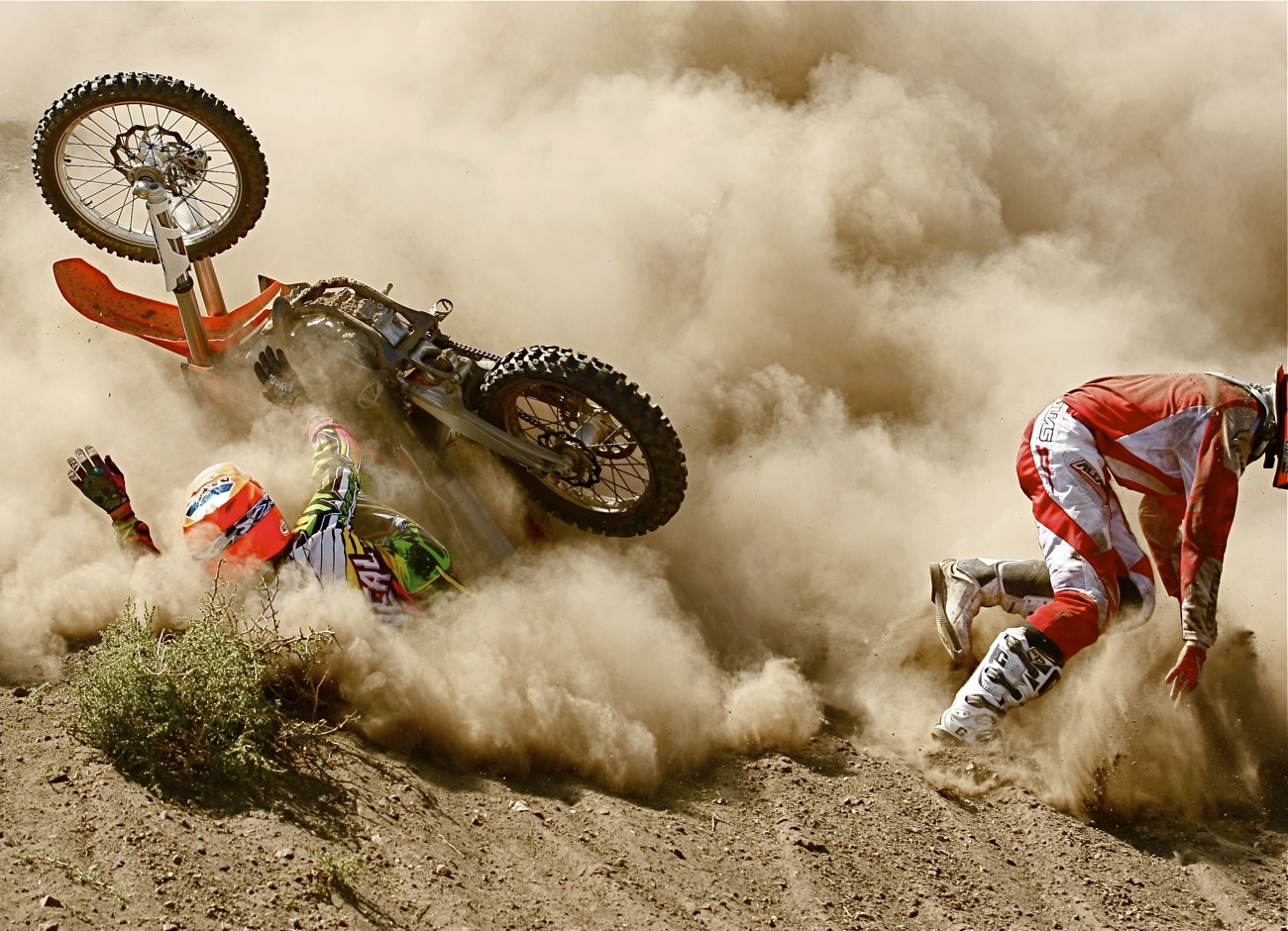 The MXA test rider on the left oversteered in and was punted by the test rider on the right. Or, did the rider on the right understeer in and clean out the rider on the left?
The MXA test rider on the left oversteered in and was punted by the test rider on the right. Or, did the rider on the right understeer in and clean out the rider on the left?
When a bike tucks, knifes under, pushes or washes out, it is exhibiting steering input traits. Some of these traits are good and some are bad, but not necessarily all the time. Here are the three major steering inputs.
OVERSTEER:
Oversteer is a handling condition in which the front wheel of the bike turns in quicker than the rear wheel. If a bike has excessive oversteer, the front end will tuck and the rear wheel will step out (but not necessarily slide). All MXA test riders prefer a bike with some oversteer to one with understeer. Suzuki RMs tend to oversteer.
UNDERSTEER:
Understeer is a handling condition in which the front wheel of the bike turns in slower than the rear wheel. In essence, the rider turns the bars to dissect a given line with the front tire, but the front wheel misses the line. You aim for the inside but end up outside. In the old days, understeer was called “pushing” or “washing out.” Most European bikes of the last three decades understeered.
NEUTRAL:
There are track conditions or corner shapes that allow every bike to be neutral at some point. A handling condition that could be referred to as neutral is one in which the front and rear wheel have the same slip angles. When a bike is neutral, it needs very little input at the bars. Think of a bike railing a berm as a neutral input situation?both wheels are tracking the same line, and neither one is overpowering the other. It should be noted that a neutral-handling bike is not necessarily a good thing, because it does not allow either end to break loose to accelerate in a turn.
DISSECTING A CORNER
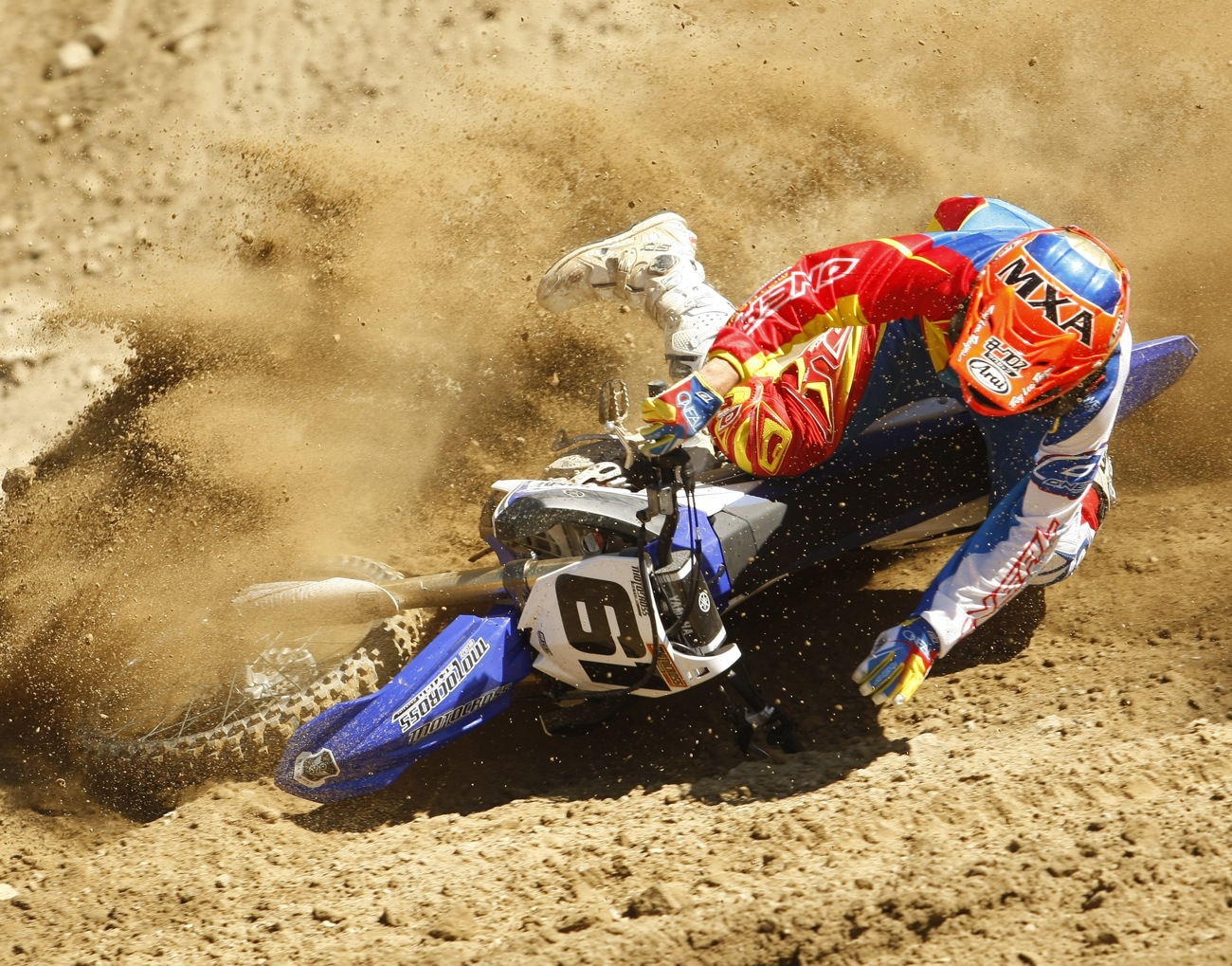 Corners can be broken into three distinct parts that require special care — this is the unappreciated fourth part of a corner.
Corners can be broken into three distinct parts that require special care — this is the unappreciated fourth part of a corner.
To the uninitiated, a turn is just one swift movement of the bike. Not true. Most MXA test riders break a corner into three parts: turn-in, center-out and exit. These are the three major components to any corner. How the bike responds to each part of the act of turning makes or breaks the handling of a bike.
TURN-IN:
Turn-in is when the rider first tries to turn the bike into the corner and steers it toward the apex. Turn-in is measured by how immediately and accurately the bike is redirected into the corner. When the handlebars are turned at the entrance of a corner, the bike can respond four ways: (1) It might bite and oversteer. (2) It might push and understeer. (3) It might track through the center of the line and be neutral. (4) Or, it might oversteer in and then understeer out?something that test riders refer to as “castering” at turn-in.
CENTER-OUT:
Center-out is just shorthand for saying “from the center of the corner to the exit.” The center of the corner isn’t necessary in the center, but is where the actual change in direction is implemented. You might turn into a hairpin turn, but you won’t be going in the right direction until you apex your corner (and not necessarily at the apex of the corner). That weirdly convoluted description defines center-out.
EXIT:
It might seem obvious that the exit of a corner is where it dumps back out onto a straight, but in the case of a motorcycle, the exit is the spot where the bike is straightened up and steering input is lessened?or more accurately, when steering input is momentarily reversed.
THINGS HAPPEN FAST ON A BIKE
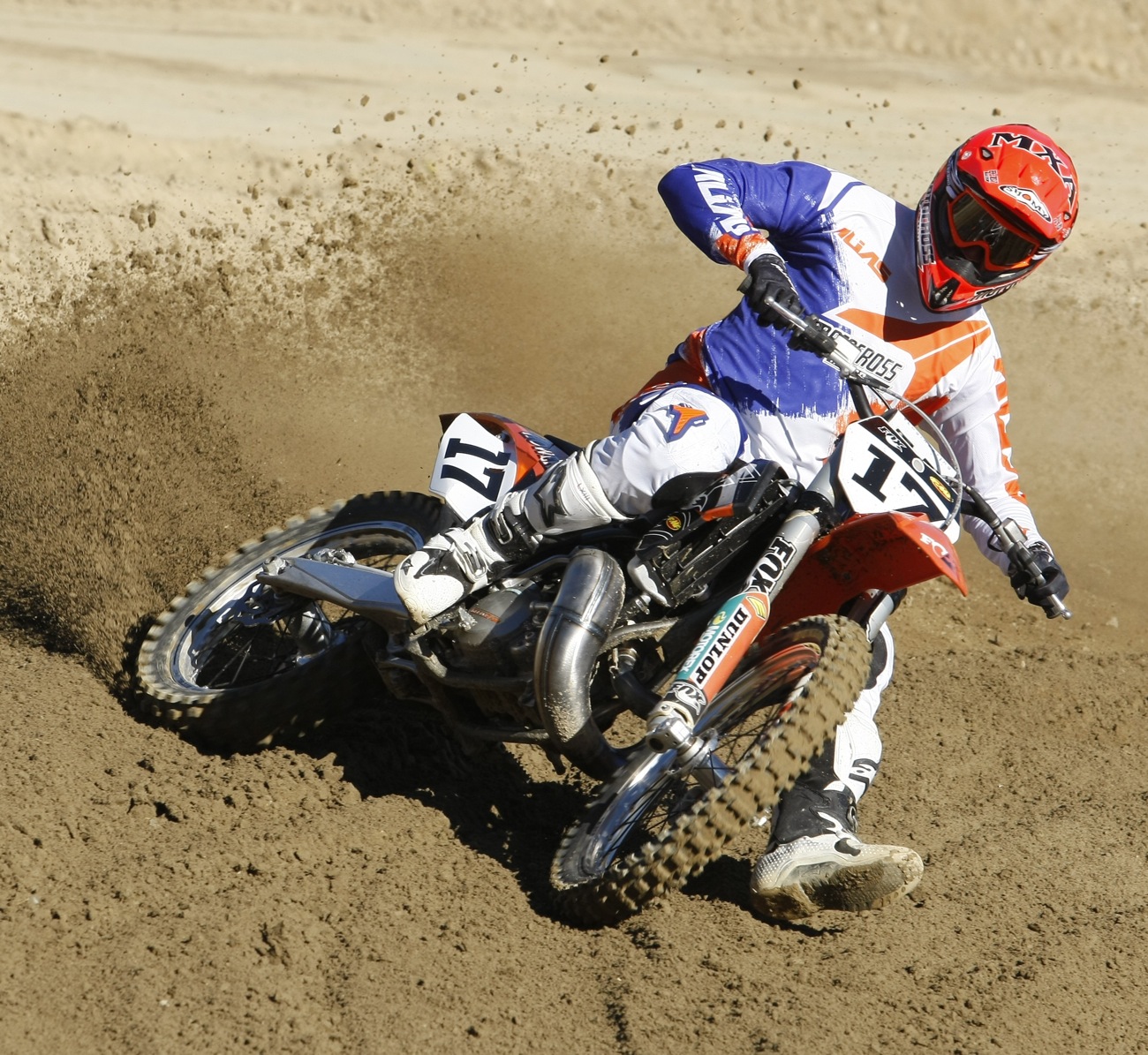 As the bike understeers on the exit of this turn the rider throttle steers to correct the bike’s path.
As the bike understeers on the exit of this turn the rider throttle steers to correct the bike’s path.
After the initial learning phase, most motocross racers respond to handling situations reflexively. They don’t think about what to do; they just do it. But, what they do is often a combination of different actions.
THROTTLE STEER:
Throttle steer is a correction factor that most test riders never thought about on a two-stroke. The advent of four-strokes brought throttle steer to the forefront, because many bikes needed the extra help to get around a turn. Throttle steer takes place when a bike understeers from the center-out. If you snap the throttle on, the rear end will step out and stop the understeer. Essentially, you are using the throttle to bring the rear wheel around when the front won’t turn.
FRONT-WHEEL HANDLING:
Since a four-stroke revs slower, it drives the chassis without sudden weight shifts towards the rear. The throttle of a thumper doesn’t lift the front wheel as much as it drives it into the ground. Additionally, decompression braking creates a massive weight shift to the front on the entrance to corners. With more weight on the front wheel, even the slightest turn of the handlebars rewards the four-stroke rider with instantaneous response; thus it is steered by the front wheel more than the rear.
REAR-WHEEL HANDLING:
A two-stroke has snappy power that lifts the front wheel, a quicker rev that allows the rear tire to skim across the top of the ground, and no decompression braking to bury the front tire into the dirt. The typical two-stroke rider rails into a turn with the front wheel cocked in the hoped-for direction of travel, and then grabs the throttle to bring the rear wheel around the apex. This is, in essence, throttle steer on a grand level.
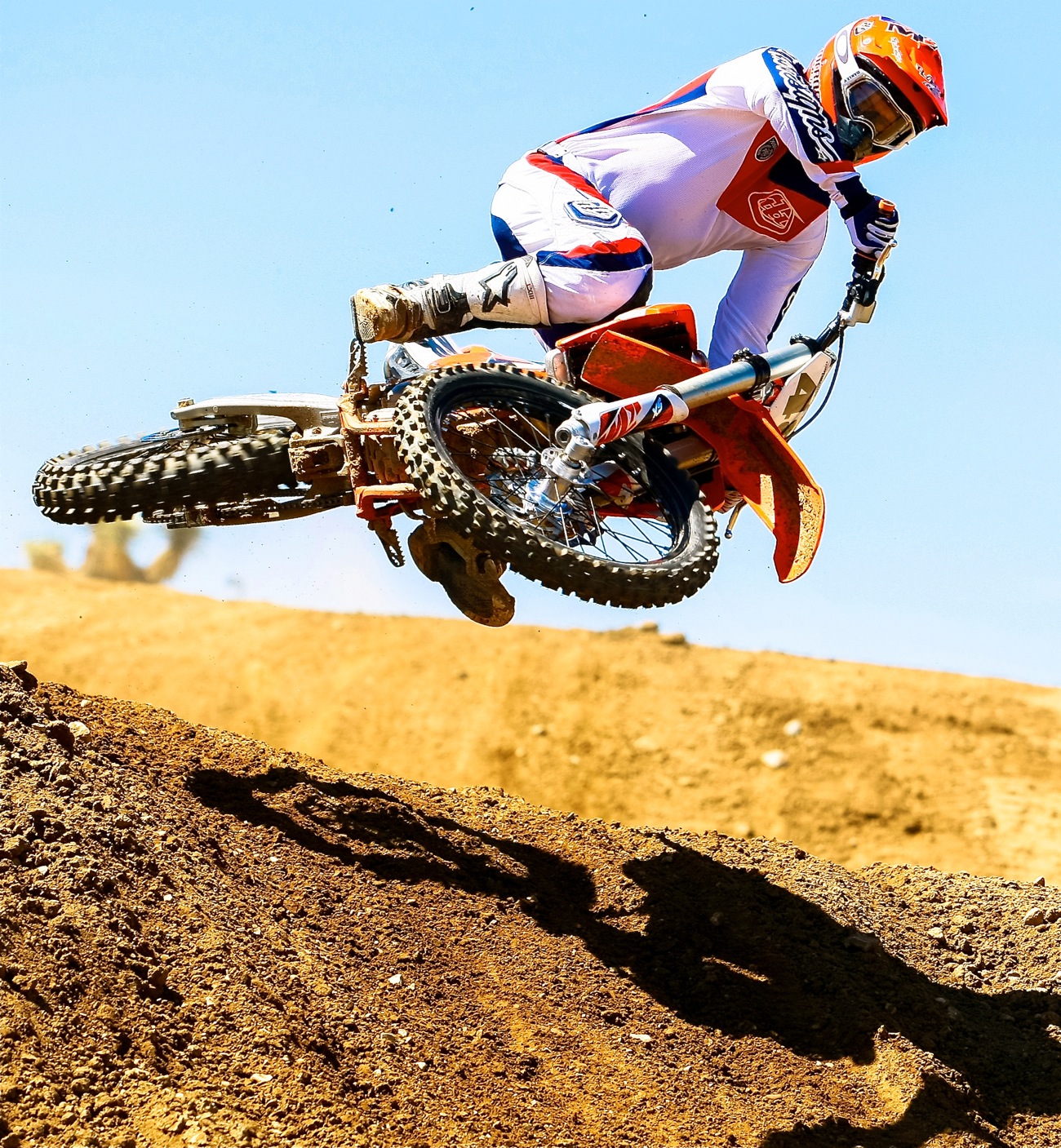 Do you know the roll rate of your bike?
Do you know the roll rate of your bike?
ROLL:
Have you ever seen a fighter pilot do a snap roll? Motorcycles roll on a much smaller scale when they are leaned from side to side. The faster the roll rate in an airplane, the quicker the pilot can get his airplane rotated into new angles. The same is true with a motorcycle. Roll rate is important on a motocross track. It should be noted that the current trend towards centralization of mass is an attempt to improve roll, pitch and yaw. The rotating mass of a four-stroke’s crank, cam and valve train resists roll.
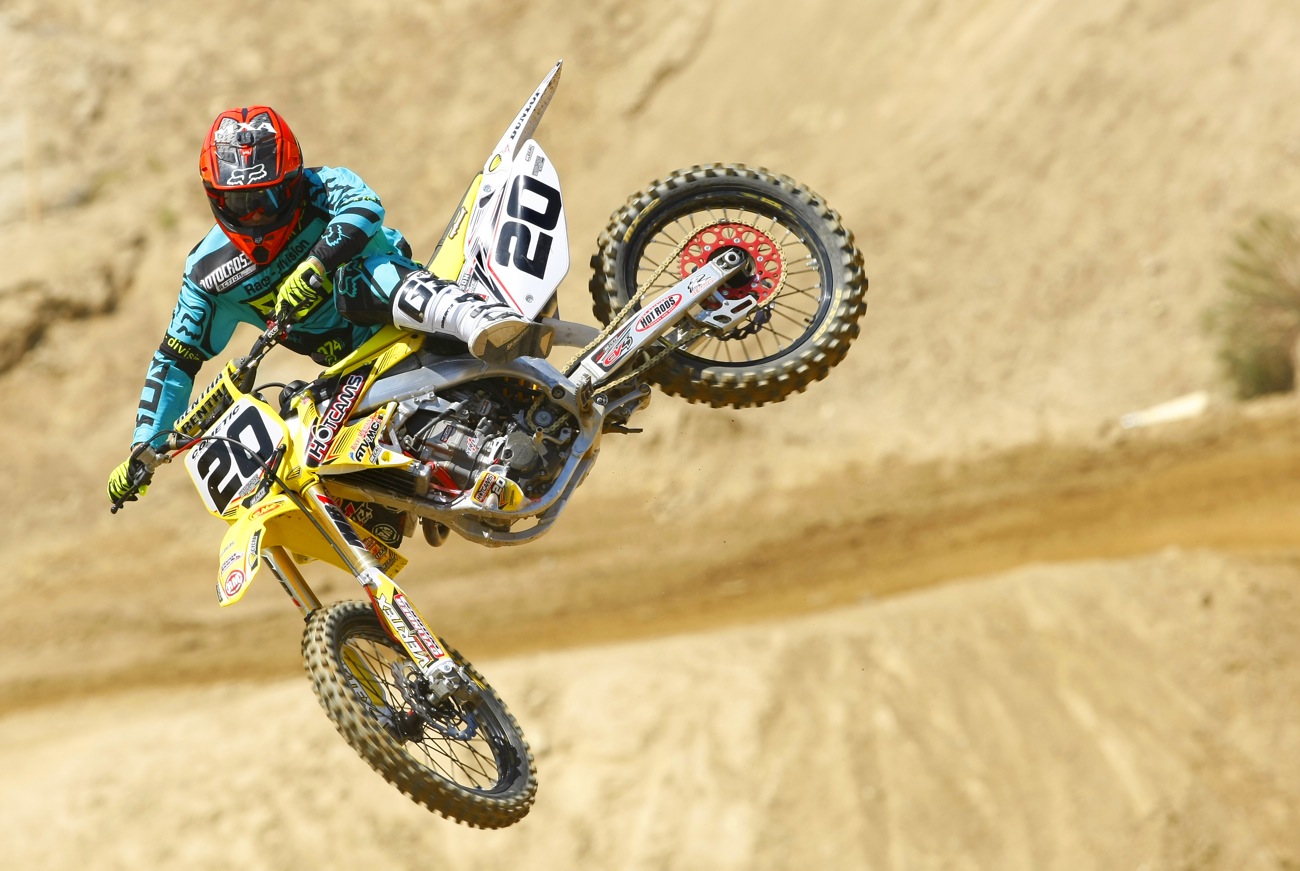 The classic example to yaw is the whip.
The classic example to yaw is the whip.
YAW:
In it purest form, a tank slapper is the perfect example of yaw. Yaw is when the rear wheel tracks outside the center line of the front wheel.
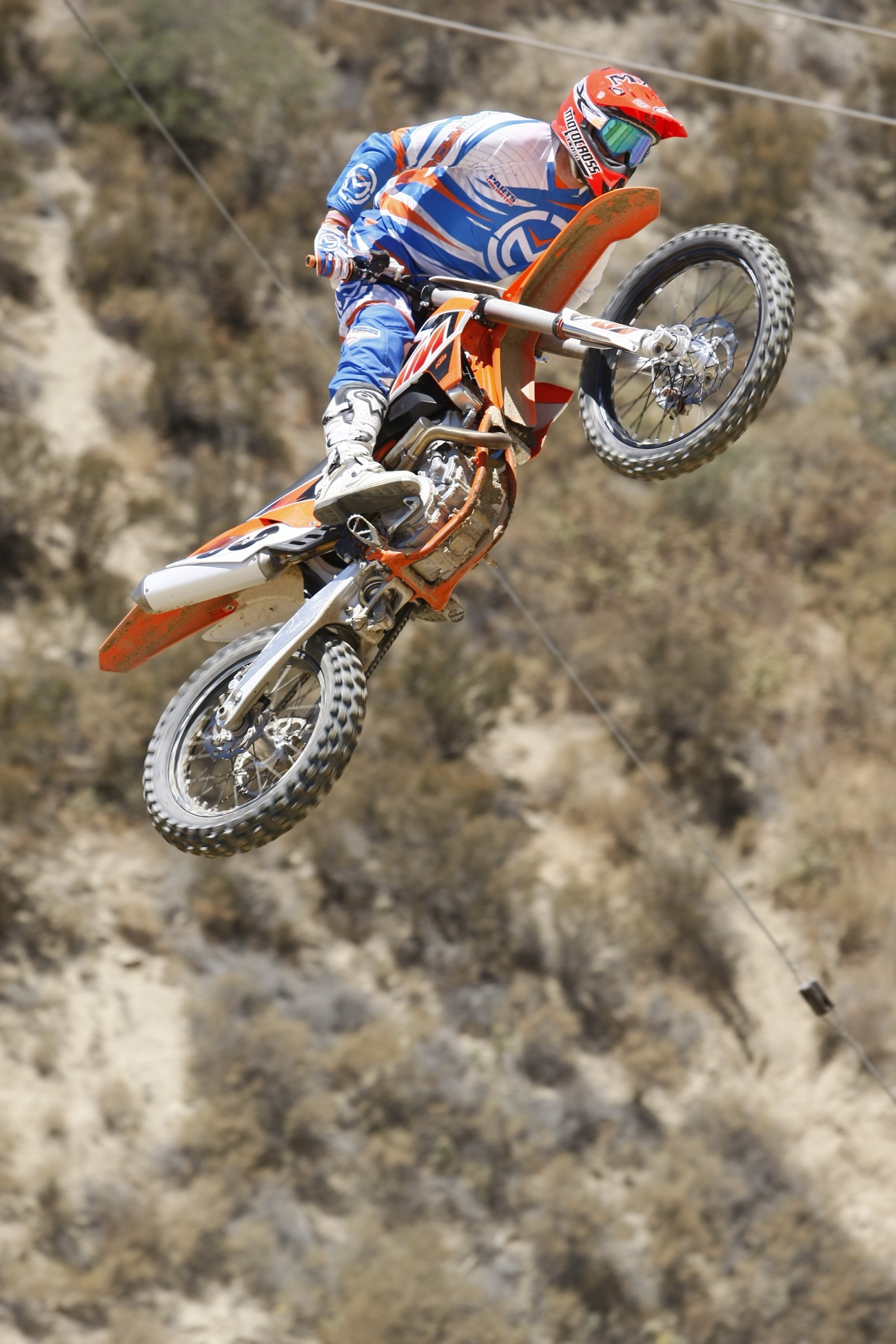 Although you can pitch your bike up, pitch refers to down just as well.
Although you can pitch your bike up, pitch refers to down just as well.
PITCH:
An endo is when the bike is pitched downward, and a loop-out is when the bike is pitched upward. Pitch, as most motocrossers know, can be controlled by body position or panic revs. Weight bias and suspension settings can make a bike more pitch sensitive.
There you have it: Oversteer, turn-in, understeer, center-out, neutral, throttle steer, yaw, roll and pitch are the basic language of MXA test riders. All of the variables are interrelated, and no bike handles without a number of intertwined factors working in unison.


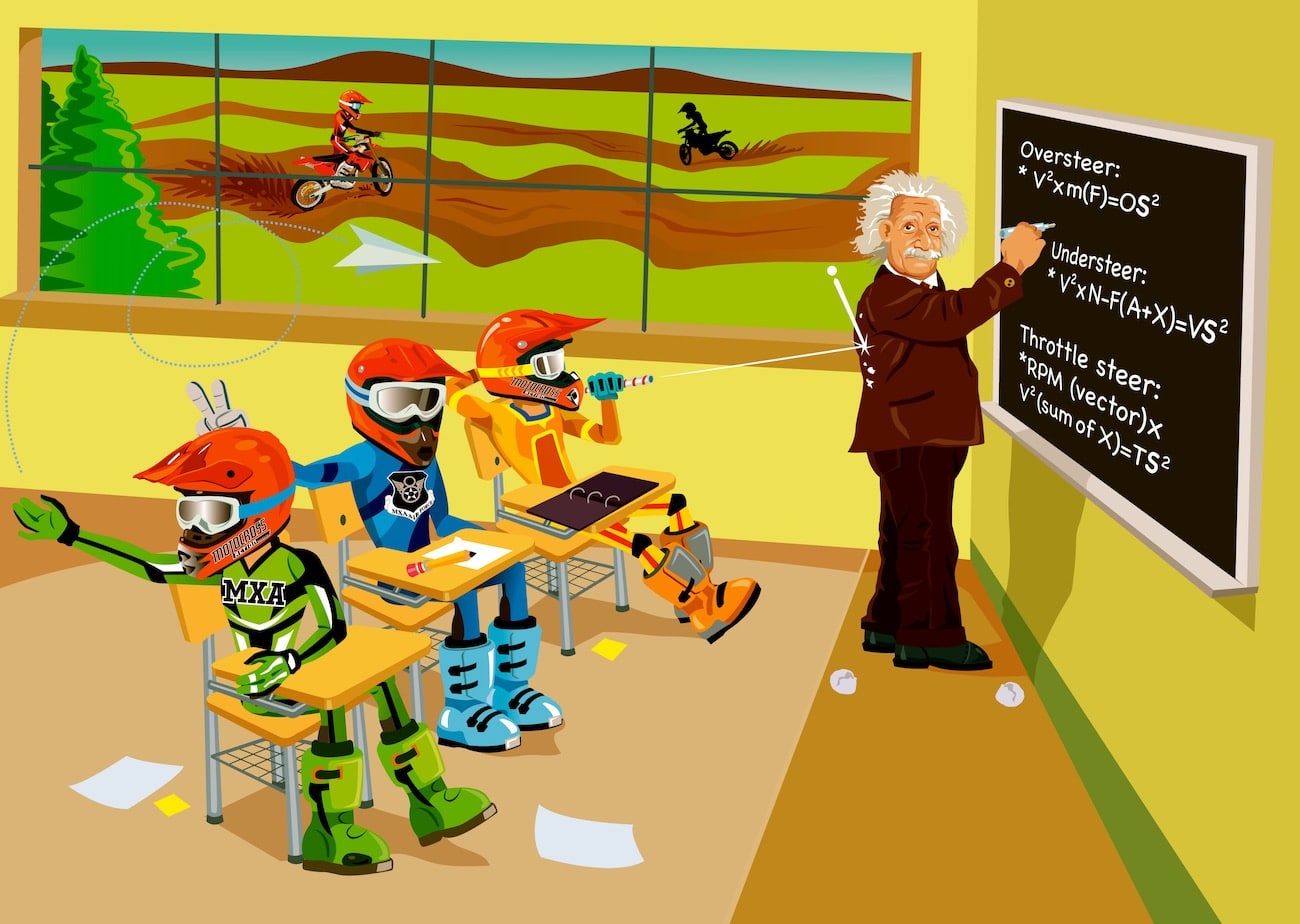



Comments are closed.